HP Lap Dock review: the Elite x3 gets a laptop mode, but is the tech ready yet?
The future of mobile computing is here...almost.
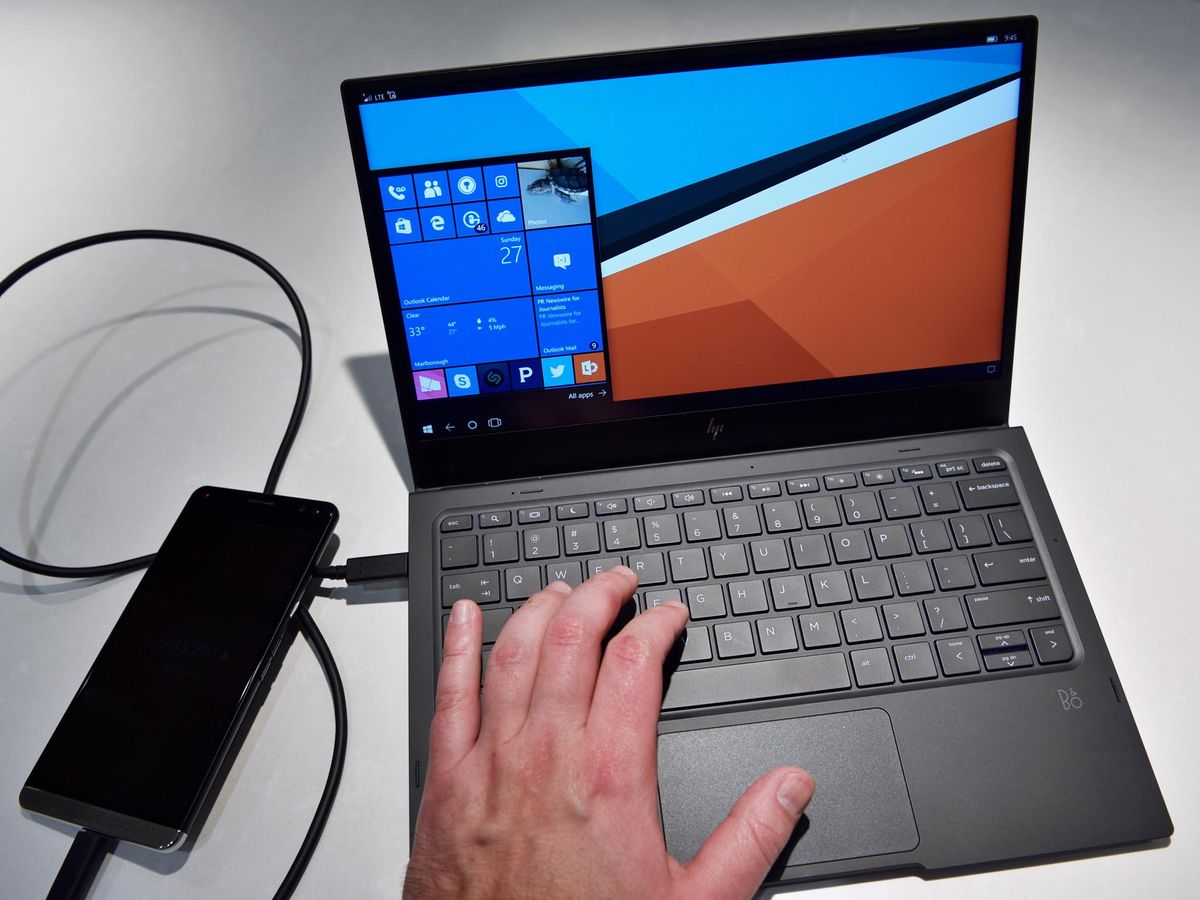
The HP Elite x3 is arguably one of the most critical Windows 10 Mobile devices to date. Not because it is expected to be a consumer hit, but because it best represents Microsoft's vision for the future of mobile computing. The notion of one device that you carry around all the time is still years ahead for most people, but there's little reason not to start trying today.
The Elite x3's corresponding Lap Dock, which turns the phone into an Ultrabook is that first attempt at converged computing. How well does it hold up? It's a mixed bag as you'll find out in my review.
Specifications and Features
The HP Lap Dock is a $599 Continuum-enabled device that closely resembles a laptop in form and function. I say it resembles because it lacks a CPU, RAM, storage, and any Wi-Fi or Bluetooth radios standard to "real" laptops.
Instead, the Lap Dock is a shell. It has a relatively large 46.5 WHr 4-cell battery and three USB Type-C ports. One port is for Elite x3 to either charge (45W) or to dock directly. The other two Type-C ports are for charging the device itself or as data in/out for peripherals. There is also a micro HDMI port.
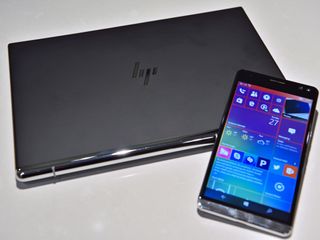
For a display, the Lap Dock features a "nearly borderless" matte 12.5-inch LED-backlit FHD (1920 x 1080) screen that ramps up to an ample 300 nits. The display is fantastic. It's bright enough, renders text very clearly, and because it is anti-glare it is ideal for writing and work.
For audio, there are integrated Bang & Olufsen stereo speakers that can get quite loud for such a small device. It's quite impressive and suitable for presentations. There are also integrated noise canceling microphones and a traditional stereo headphone jack. There is no webcam, however making Skype calls oddly neutered.
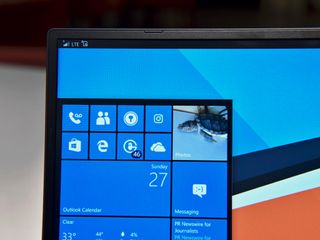
Weighing in at 2.3 lbs (1 kg) you can't say the Lap Dock is light, although it is far from heavy. Instead, it feels dense for its size, likely due to the relatively large battery. It's a solid, premium feel, and the chrome edge and polycarbonate body nicely match the Elite x3. The inside of the Lap Dock is soft-touch paint and feels luxurious. That said, the whole thing's a fingerprint magnet you will occasionally want to give a wipe. A nice touch from the HP design team is the four-LED charging indicator on the side.
Get the Windows Central Newsletter
All the latest news, reviews, and guides for Windows and Xbox diehards.
The AC charger is surprisingly large. It's a three-pronged design with a very long cable as is common with HP products. Interestingly, the HP Spectre x360 – a full on proper PC laptop with an Intel Core i7 processor – only has a two-pronged plug. Nonetheless, the base of the charger is the same between the two devices.
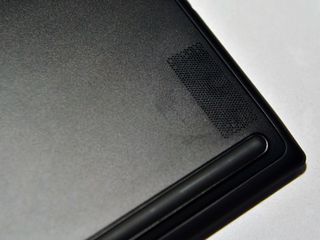
I can't speak enough about the quality of the Lap Dock. It's fabulous. While $599 is still expensive, you can't criticize the Lap Dock for feeling subpar in any way. It's just leading engineering.
Keyboard and Trackpad
The HP Lap Dock has one of the best keyboards on a device at this size. It feels identical to the Surface Pro 4, including that spring-back feature on a key return. The keys are spaced apart with a small gap and relatively large and square.
On the top row are the usual Function and Media keys. You need to hold FN down to utilize volume controls, display brightness, and search.
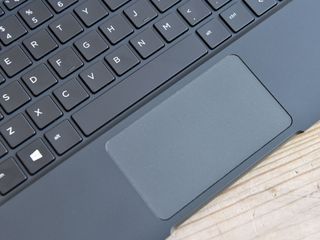
Simply put, it's a joy to type on the Lap Dock. There is also an optional two-stage backlight for the keys which gets the job done.
Update: A small firmware update is now available that helps improve the touchpad experience
The trackpad is a bit mixed. At four inches diagonal it's not small, but it's not huge either — it's adequately sized. And the premium glass finish has an excellent feel. The biggest issue with the trackpad is mostly the lack of Precision Touchpad support from Microsoft, who did not build that into Continuum. That means it's up to HP to create the drivers and fine tune the experience, which they have done admirably. It's not perfect, but it works well enough.
To plug in or not to plug in
In an ideal world, you would keep the HP Elite x3 in your pocket, open the lid on the Lap Dock, and begin typing. That vision is almost here today. Almost.
Microsoft is bringing a feature to Continuum in early 2017 that detects Continuum-enabled hardware to auto-connect. That will solve the 'opening the lid and connecting' scenario described above. For now, however, you must manually connect to the Lap Dock wirelessly through the Continuum app. It 's not hard, but it is an extra step.
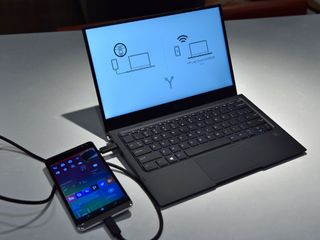
Another issue is the wireless Miracast experience with Continuum. Due to bandwidth, Continuum functions only at 30 FPS when wireless, versus 60 FPS when wired. It makes a huge difference. While a wireless connection works in the technical sense, the wired one is leaps and bounds faster, more consistent, and just works better.
Plugging in the Elite x3 to the Lap Dock and Continuum is up and running in about 15 seconds. It's not instant, but it's not a long wait either.
While using the Lap Dock wired is a better Continuum experience, it's obviously less convenient to have to plug in a phone or even carry a cable. Apparently, however, we are hitting today's limits with Continuum. Things should get better with OS software improvements and future technology.
Battery Life
HP claims that wireless the Lap Dock will get "up to" 6 hours in wireless mode with a very specific 7 hours and 10 minutes in wired, which may be counterintuitive. That's an ideal battery test using looping locally-stored 720p video at 50 percent brightness, audio at 50% (using headphones), with the Elite x3 in airplane mode.
That is not, however, the real world. How you use the Lap Dock — wired or wireless, full brightness or turned down, blasting the speakers, or using the Lap Dock's battery to trickle charge the Elite x3… all of this will drain the battery faster.
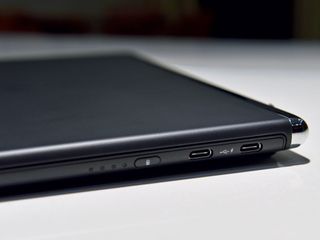
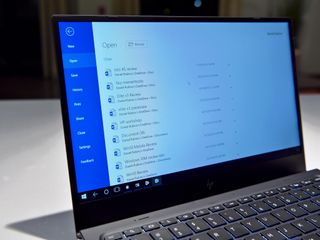
Speaking of charging, the Lap Dock doesn't pack any form of Quick Charge, just normal, low amperage USB Type-C charging. That means the Elite x3 can technically lose its charge even when wired if you're doing intensive CPU and radio-heavy tasks. In a best-case scenario, you may gain a few percentage points of battery on the Elite x3, but often you will just break even.
That's a tad disappointing, but perhaps we are reaching barriers with powering a secondary display and charging the Elite x3 at the same time.
From my experience, the HP Lap Dock wired (since wireless is not a good experience) will net around 4 to 5 hours of real time usage while trickle charging the phone. It's not terrible, but I think some of us were expecting somewhere north of 8 or 10 hours since there is no CPU, RAM, or internal storage for the Lap Dock's battery to power.
I think it's best to think of the Lap Dock as something you can use in a pinch when traveling or at a coffee spot, where you want a larger display and a full keyboard. However, it is not something you will be using on battery for extended periods of time. You can, of course, carry around the AC charger and power everything that way… but at this point you should probably be considering a real laptop.
Continuum is holding it back
I think HP did all they could with what Microsoft has delivered so far in Windows 10 Mobile. It's hard to fault the Lap Dock for any obvious hardware flaws (sans the absent web camera). Even there, however, it's not evident that Windows 10 Mobile could even use an external web camera given one.
The problem is Windows 10 Mobile's Continuum feature is still very much a new thing, still undergoing development and improvements. Microsoft's goal is to bring things like keyboard shortcuts, matching Action Center, pinnable Taskbar items, and more to Continuum to close the visual differences between it and Windows 10 on PC. Same goes for windowed and snapped apps, neither of which are available today in Continuum (but are expected in the Creator's Update, and Redstone 3 later in 2017).
So, while the Lap Dock hardware is fantastic, there are still some software glitches that bring down the experience. For instance, I have had the sound driver fail with the Lap Dock so that sound only came from the phone and not the speakers. On occasion, the mouse cursor fails to show on the Lap Dock. Usually, a quick Continuum reconnection fixes these bugs, but it's frequent enough to be frustrating. I also have had instability using Redstone 2/Creator's Update builds on the Insider Fast Ring, but I'll chalk that up to beta testing software.
I also could not get Skype Preview to work reliable through the Lap Dock. While the app launched and allowed for messaging, calls were problematic with the audio never going through the speakers. Again, beta software.
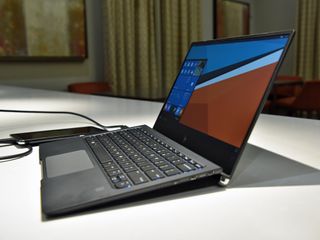
Scrolling and launching apps are also not as smooth or fast as you would want — especially when paired wirelessly. Plug in, however, and the experience hits — or is at least close to — acceptable.
These are all software issues, of course, and part of Continuum being the first of its kind. There is little reason not to expect things to get better with each update, but for now, the Lap Dock is a work in progress.
Final Thoughts
Despite some of the negative experiences with Continuum, the Lap Dock is still utterly fascinating. I find myself using it on the couch or when heading out for the day, even if it's underpowered for my job.
The Lap Dock and Elite x3 excel at lighter experiences like Office (Word, PowerPoint, etc.), email, Twitter, and the like. If you need to sit down and write out something more than a few paragraphs, the Lap Dock's keyboard is far more accommodating than the little digital one on the Elite x3. Even the Edge browser was a better experience than what I expected.
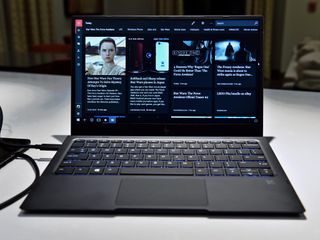
Nonetheless, the Microsoft Store's app selection, as always, presents issues. I rely on Slack for work, for instance, and the lack of a Continuum-compatible UWP version of the app hurts.
If you are torn between choosing an Elite x3 and Lap Dock or a new "real" laptop, I think it's best you go for the laptop. The Elite x3 and Lap Dock do have a purpose today for those who need light, mobile computing, but for consumers (or prosumers) this technology is only nearing a minimum acceptable mark.
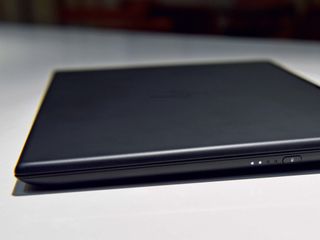
I suppose if you have $600 (and already own the Elite x3) the Continuum experience with the Lap Dock could be fun. That's a limited demographic, though, and it is perhaps best to leave the Lap Dock to companies who choose to test the Elite x3 experience in the field.
For those curious, the HP Lap Dock works just fine with the Lumia 950 and Lumia 950 XL. However, the Elite x3's more powerful processor and extra RAM give a slightly improved experience.
In the face of these criticisms, you must give HP some credit for doing an admirable job. The Lap Dock experience may not quite be there yet today, but you can see the groundwork and first attempt at this technology starting to come together and make sense.
See the HP Lap Dock at Microsoft
Hey, smartphones were terrible in 2005. They were unstable, had poor battery life, lacked apps, didn't have GPS, sported terrible cameras — all of this was overcome with time and development. I expect the same for Windows 10 and Continuum as well. We're not there yet, but we're getting closer with every try.

Daniel Rubino is the Editor-in-chief of Windows Central. He is also the head reviewer, podcast co-host, and analyst. He has been covering Microsoft since 2007 when this site was called WMExperts (and later Windows Phone Central). His interests include Windows, laptops, next-gen computing, and wearable tech. He has reviewed laptops for over 10 years and is particularly fond of 2-in-1 convertibles, Arm64 processors, new form factors, and thin-and-light PCs. Before all this tech stuff, he worked on a Ph.D. in linguistics, performed polysomnographs in NYC, and was a motion-picture operator for 17 years.